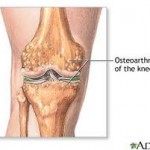Osteoarthritis is the most commonly occurring of the about 200 types of arthritis according to medical experts. The disease indeed comes with age and it spares no one. By age forty, 90 percent of all individuals will have x-ray findings in their joints that one consistent with osteoarthritis although many will still be without symptoms.
The experts added that by age 55, at least 80 percent of all people will occasionally or continually experience a symptom or two of the disease, which include morning stiffness, pain, tenderness and limitation of movement of the involved joints.
Medical experts are unanimous in their assessment that the joints usually affected by osteoarthritis are those of the fingers and toes, between the thumb and the hands, between the big toes and the feet, the hips, the knees, the neck and the lower back.
Moreover, they stressed that osteoarthritis is generally attributed to the wear and tear that occurs in a joint because of use. Changes in the joint include erosion of the cartilages that cover the surface of the articulating bones that enable the bones a glide smoothly; and the degeneration of the articulating bones.
The experts further said that exact mechanisms that cause these changes are not yet known and this partly explains why there’s no cure yet for the disease. The development and prognosis of osteoarthritis is aggravated by trauma, joint instability and obesity and influenced by hormonal and genetic factors.
Initially, according to them the signs and symptoms of osteoarthritis come only occasionally and are mild and tolerable. But the disease is a progressive one and the signs and symptoms become really bothersome and persisted in later life. In some people, movement in the involved joint becomes severely limited and the bones become prominent and deformed.
For mild osteoarthritis, treatment consists of weight reduction, appropriate regular exercise and physical therapy to ease pain and strengthen the muscles around the joint. In very severe cases especially if there are marked deformities of the bones and limitation of motion in the joint, surgery to repair, reconstruct or replace the joint is an option, the medical experts suggested.
Restriction of your intake of protein rich foods will not contribute to the control of your osteoarthritis. Protein restriction helps only those who are suffering from a relatively rare type of osteoarthritis that has a familiar tendency called gout. Gout which affects mainly adult men account for only about 5 percent of arthritis cases, they concluded.
